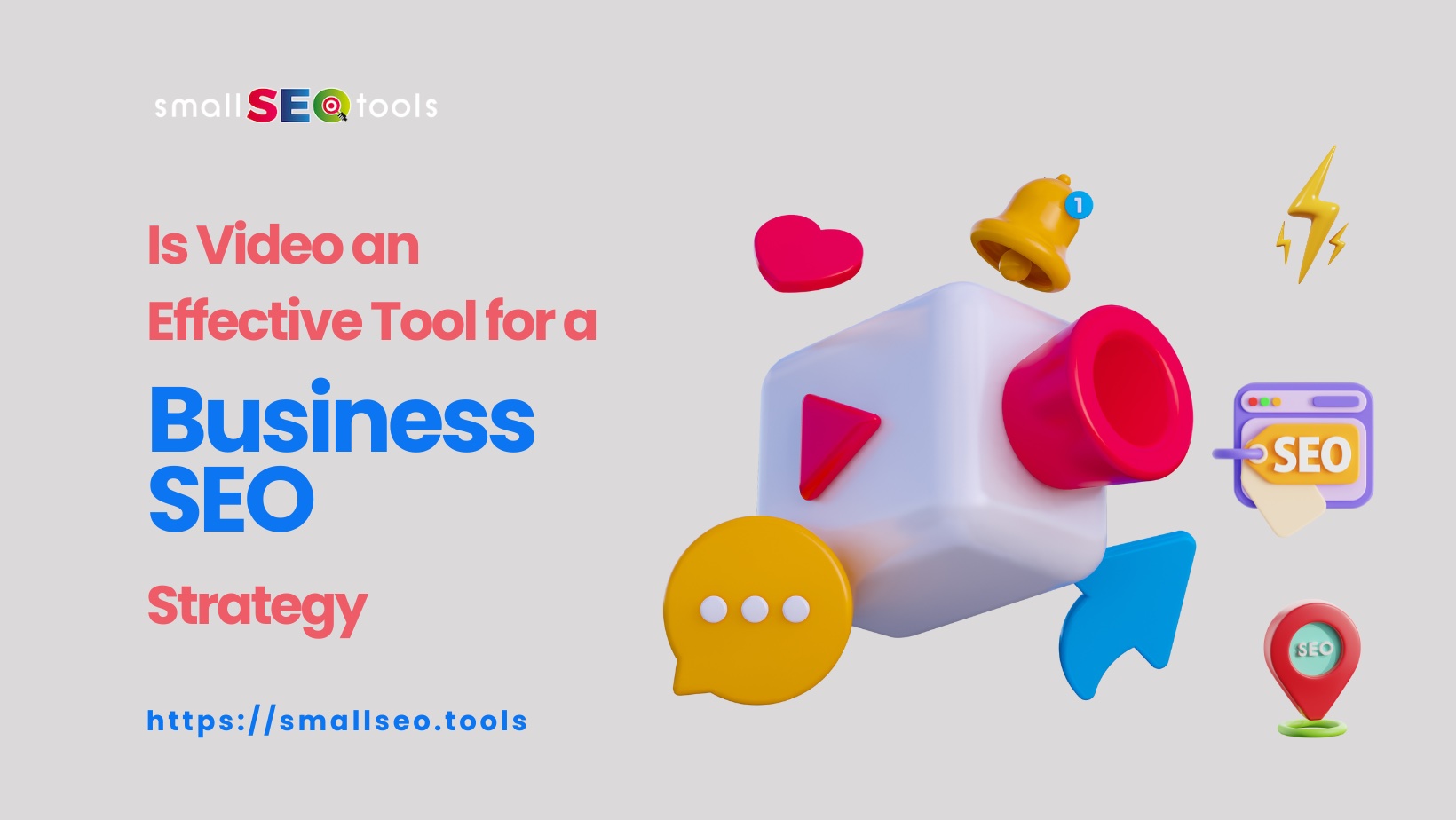Is Video an Effective Tool for a Business SEO Strategy?

A lot of people spend their time focusing on words and words alone for their SEO strategy. Companies may be all about blogging or writing authoritative content to try and rank in the search engines. Stats suggest that a lot of people are now using YouTube and other video sites as a sort of search engine.
On top of that, embedding videos on a site or sharing them on social media could have an impact on the campaign and how search engines rank a site. Later, we get into some of the ways video can be used in a strategy, but first let’s look at how easy it has become to create video.
Making Video: Accessible For All Businesses
There isn’t much of an excuse for companies not making videos now in their businesses (if it can help them to promote their services). Phones have a high level of quality in video footage and this is more than good enough to create and share videos for TikTok or other social media. Some businesses use it as their only form of promotion!
Video can involve recorded videos with high production values but it can also be live streaming. A lot of companies do things like Q and A sessions with their employees and this can be done via live streaming. Streaming can be done via phones but some companies look to the best streaming webcam options as they give them a much more professional look and make sure that the video looks as good as possible.
Many individuals making videos are important contacts for businesses. The rise of influencer marketing has allowed a lot of people to connect with new audiences by advertising via video platforms. These mentions may be a signal for some search engines that take into account backlinks from the platforms where they are published.

Keeping People Engaged on a Website
Search engines including Google are thought to reward content that keeps users on a page. A well-crafted video can make visitors stay longer, watch more, and explore further. This increased dwell time signals to search engines that the content is valuable, which can help improve rankings.
SEO Expert Brian Dean has stated that multimedia in itself is a ranking factor. Whether sites have videos or not could make a difference to where they rank, but so could the way the video makes them interact. Dean goes on to explain about “dwell time” which is a really important factor for search engines when they are deciding how well to rank a site.
This factor is described as “how long people spend on your page when coming from a Google search” and some people call it “long clicks vs short clicks” when analyzing.
YouTube SEO
YouTube’s role works in multiple ways. Some people might be aware that it is actually the second-largest search engine globally. With billions of users searching for content every day, it offers businesses a vast audience. Optimizing video content for YouTube can significantly boost SEO efforts.
The key to this is using relevant keywords in titles and tags but it also depends on whether a video gets some traction and clicks from the people looking for that info. Keywords help match the video with user searches. Additionally, using eye-catching thumbnails and adding transcripts or captions can make videos more visible and accessible, further enhancing SEO.
What is the Future of Video in SEO?
SEO is in a strange place right now and the industry has seen huge shifts in 2024. Algorithm changes and controversial accusations about Google’s monopolization have led to a weird era of search marketing. However it shakes out, it seems video will be important. Video’s role in SEO is only expected to grow. New formats like live streaming and virtual reality are expanding the possibilities for engagement. Businesses that embrace these trends will likely see long-term benefits.
As search engines continue to evolve, they’re getting better at understanding and prioritizing multimedia content. Video will likely remain a key player in the SEO game.
As Google will tell SEOs (and regularly does) this is not about just trying to tick a box. SEO is about trying to provide users with what they are looking for and what suits their needs when searching. A well-placed video can make a website more engaging and informative, offering a richer experience. For example, a product demo video can explain features more effectively than text alone so search engines will recognize this (in theory, at least).
Better user experience leads to lower bounce rates and higher conversion rates, both of which are positive signals for search engines. Integrating video into a website can, therefore, be a strategic move to boost SEO performance.
Whatever direction the world of search engines goes in, video is not something for most businesses to ignore. Any customer-facing business can potentially spread the word on video platforms and boost its site visibility in the process.
leave a comment
Please post your comments here.SEARCH
-
Popular SEO Tools
- Paraphrasing Tool
- Plagiarism Checker
- Article Spinner / Rewriter
- Keyword Position Checker
- Grammar Check
- Domain Authority Checker
- Pagespeed Insights Checker
- Reverse Image Search
- Page Authority checker
- Backlink Checker
- Alexa Rank Checker
- Backlink Maker
- Domain Age Checker
- Website Ping Tool
- Website Seo Score Checker
- Keyword Density Checker
- Website Page Size Checker
- Word Count Checker
- Mozrank Checker

 ™
™